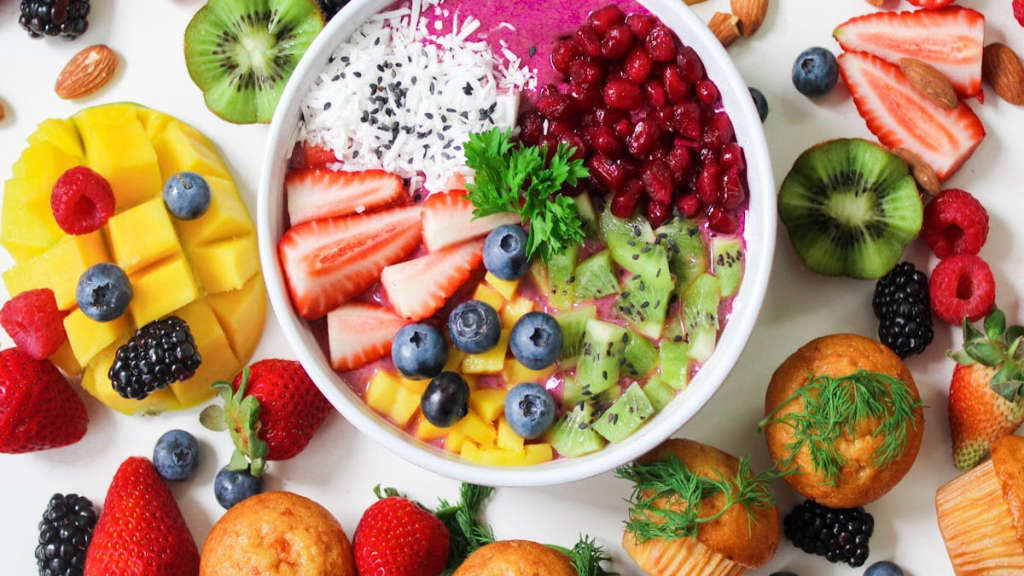When it comes to preparing a lunch box for your kids, it can be a challenge to find the right balance between healthy and tasty options that they will actually eat. However, with a little creativity and planning, you can create the ultimate kids’ lunch box that will make both you and your little ones happy. Here are 10 tips to help you pack a lunch box that is not only nutritious but also appealing to your kids.
Main Points
- Plan Ahead: Take some time to plan out the week’s lunch box menu so that you can ensure a variety of options and avoid last-minute stress.
- Include a Protein: Make sure to include a good source of protein, such as lean meat, eggs, or beans, to keep your kids energized throughout the day.
- Add Colorful Fruits and Veggies: Incorporate a rainbow of fruits and vegetables to provide essential vitamins and minerals, and make the lunch box visually appealing.
- Choose Whole Grains: Opt for whole grain bread, pasta, or crackers to provide fiber and sustained energy for your kids.
- Consider Dairy or Dairy Alternatives: Include dairy products or their alternatives, such as yogurt or cheese, to promote strong bones and teeth.
- Limit Refined Sugars and Processed Foods: Minimize the amount of processed snacks and sweet treats to create a balanced and healthy lunch box.
- Involve Your Kids: Get your children involved in choosing and preparing their lunch box items to increase their interest and excitement about mealtime.
- Use Fun and Creative Containers: Invest in lunch boxes and containers with compartments, or even use cookie cutters to make food more interesting and enjoyable for your kids.
- Balance Portions: Be mindful of portion sizes to ensure that your kids are getting enough food without overeating.
- Stay Hydrated: Don’t forget to include a bottle of water or a low-sugar drink to keep your kids hydrated throughout the day.
Balancing Nutrition and Taste for Picky Eaters
When it comes to feeding picky eaters, parents often find themselves in a challenging position. It can be difficult to balance the nutritional needs of a child with their preferences for certain tastes and textures. However, with a few strategies and tips, it is possible to achieve a balance that satisfies both nutritional requirements and taste preferences.
Strategies for Balancing Nutrition and Taste
- Variety: Introducing a wide variety of foods to a picky eater can help expand their palate and ensure they are receiving a diverse range of nutrients. Encourage trying new foods, even if it’s just a small taste at first. Over time, this exposure can lead to a more adventurous eater.
- Hidden Nutrition: Sneak in extra nutrients by incorporating them into familiar dishes. For example, adding pureed vegetables to pasta sauce or smoothies can boost the nutritional content without altering the taste significantly.
- Positive Reinforcement: Use positive reinforcement to encourage healthy eating habits. Praise the child when they try a new food or make healthy choices, and try not to make mealtimes a source of stress or conflict.
Tips for Parents of Picky Eaters
Here are a few additional tips for parents navigating the challenges of feeding picky eaters:
- Offer choices: Allow the child to have some control by offering them choices within healthy options. For example, “Would you like carrots or broccoli with dinner?”
- Get creative: Try presenting foods in different ways, such as cutting them into fun shapes or arranging them on the plate in an appealing manner.
- Seek professional guidance: If there are concerns about a child’s nutrition, consult with a pediatrician or nutritionist for personalized advice and guidance.
By taking a balanced approach and being patient, it is possible to navigate the challenges of feeding picky eaters while ensuring they receive the necessary nutrients for healthy growth and development.

Incorporating Fun and Colorful Foods
When it comes to maintaining a healthy diet, it’s important to incorporate fun and colorful foods into your meals. Not only do these foods add visual appeal to your plate, but they also provide a wide range of essential nutrients that are beneficial for your overall health.
Benefits of Fun and Colorful Foods
Fun and colorful foods, such as fruits, vegetables, and whole grains, are rich in vitamins, minerals, and antioxidants. These nutrients are essential for supporting your immune system, promoting healthy digestion, and reducing the risk of chronic diseases. Additionally, the vibrant colors of these foods indicate the presence of phytochemicals, which have anti-inflammatory and antioxidant properties.
How to Incorporate Fun and Colorful Foods into Your Diet
There are several ways to incorporate fun and colorful foods into your diet. One approach is to create visually appealing meals by including a variety of colorful fruits and vegetables in your recipes. For example, you can make a vibrant salad with a mix of red, yellow, and green bell peppers, cherry tomatoes, and purple cabbage. Another option is to experiment with different cooking methods, such as roasting or grilling, to enhance the natural colors of the foods.
Furthermore, you can make healthy and colorful snacks by combining different fruits and vegetables. For instance, you can create a colorful fruit salad by mixing berries, kiwi, and oranges. As for snacks, you can prepare colorful veggie sticks with hummus or yogurt-based dips.
| Fun and Colorful Food Ideas | Ways to Incorporate |
|---|---|
| Rainbow Fruit Salad | Mixing different fruits in a bowl |
| Grilled Veggie Skewers | Thread colorful vegetables onto skewers and grill |
Incorporating fun and colorful foods into your diet doesn’t have to be a daunting task. By being creative and experimenting with different ingredients, you can make healthy eating enjoyable and visually appealing.

Navigating Food Allergies and Dietary Restrictions
When it comes to dining out or attending social gatherings, navigating food allergies and dietary restrictions can be a challenge. It’s important to communicate your needs clearly and assertively, while also being respectful of others’ choices.
One important aspect of navigating food allergies and dietary restrictions is to always be prepared. This means doing your research ahead of time, asking questions at restaurants, and even bringing your own safe snacks or meals when necessary.
Communicating Your Needs
Effective communication is key when it comes to managing food allergies and dietary restrictions. Whether you’re dining at a friend’s house or a restaurant, don’t be afraid to speak up about your needs. Be polite but firm, and don’t hesitate to ask for ingredient lists or alternative options.
It’s also important to educate those around you about the severity of your allergies or restrictions. By helping others understand the potential consequences of cross-contamination or consuming the wrong food, you can create a safer and more inclusive environment.
In conclusion, navigating food allergies and dietary restrictions requires diligence and effective communication. By being prepared, assertive, and educating those around you, you can enjoy social gatherings and dining experiences while prioritizing your health and safety.
Batch Cooking and Meal Prep for Busy Weekdays
Are you constantly struggling to find the time to cook healthy meals during the busy weekdays? Batch cooking and meal prep may be the solution you’re looking for. By setting aside a few hours on the weekend to prepare meals for the upcoming week, you can save time and reduce stress during the hectic workdays.
Benefits of Batch Cooking and Meal Prep:
There are numerous benefits to incorporating batch cooking and meal prep into your weekly routine:
- Time-saving: By preparing multiple meals at once, you can significantly reduce the amount of time spent in the kitchen during the week. This means more time for other activities or relaxation after a long day at work.
- Healthier eating: When you have pre-prepared meals on hand, you are less likely to resort to unhealthy fast food or takeout options. This can lead to better nutrition and overall improved health.
- Cost-effective: Buying ingredients in bulk for batch cooking can be more economical than purchasing individual items for each meal. You can also reduce food waste by using up ingredients before they spoil.
When it comes to batch cooking, it’s important to have a plan in place. Consider the meals you and your family enjoy, and choose recipes that are suitable for preparing in large quantities. Some popular batch cooking options include soups, stews, casseroles, and pasta dishes.
Once you have your recipes selected, make a shopping list of the ingredients you’ll need. Organize your kitchen workspace and gather all the necessary cooking equipment. Then, dedicate a few hours to cooking and portioning out your meals into individual containers. Label each meal with the date it was prepared to ensure freshness.
For meal prep, focus on assembling ingredients that can be quickly combined into a complete meal. This may include chopping vegetables, marinating meats, or pre-cooking grains. Store these prepped ingredients in airtight containers or resealable bags for easy access during the week.
| Batch Cooking | Meal Prep |
|---|---|
| Prepare large quantities of meals to be eaten throughout the week | Assemble individual components of meals for quick and easy preparation |
| Focus on recipes that freeze well and reheat easily | Chop, slice, and cook ingredients in advance |
| Requires dedicated time for cooking and portioning | Can be done in small increments throughout the week |
By incorporating batch cooking and meal prep into your routine, you can simplify your weekdays and ensure that you and your family have access to nutritious, home-cooked meals even during the busiest of times.

Choosing the Right Containers for Freshness and Portion Control
When it comes to storing food and controlling portion sizes, choosing the right containers can make a significant difference. Freshness, portion control, and convenience are key factors to consider when selecting the most suitable containers for your needs.
Freshness
To maintain the freshness of your food, it is important to choose containers that offer airtight seals. Look for containers with secure locking mechanisms that prevent air from entering, keeping your food fresh for longer periods. Additionally, consider using clear containers to easily identify the contents and minimize the time the lid is opened, which can help preserve freshness.
Portion Control
For effective portion control, opt for containers with pre-measured compartments or those that allow for easy portioning. Divided containers are ideal for packing balanced meals, snacks, or meal prep, ensuring that you consume the right amount of food. By using portion-controlled containers, you can better manage your calorie intake and maintain a healthy diet.
Convenience
When choosing containers, consider the convenience of use. Select containers that are microwave and dishwasher safe for easy reheating and cleaning. Stackable and nestable containers are also convenient for saving space in your kitchen or when on-the-go. In addition, choose durable and leak-proof containers to prevent spills and ensure hassle-free transportation of your meals.
By prioritizing freshness, portion control, and convenience when selecting containers, you can effectively preserve the quality of your food and make it easier to maintain a healthy eating routine.

Encouraging Kids to Help with Lunch Prep
As parents, it’s important to teach our children the value of responsibility and independence from a young age. One way to do this is by involving them in the lunch preparation process. Not only does this help lighten the load for the parents, but it also teaches kids important life skills and fosters a sense of contribution and teamwork within the family.
Benefits of Involving Kids in Lunch Prep
When kids are involved in preparing their own lunches, they learn important life skills such as planning, organizing, and making healthy choices. It also allows them to feel a sense of ownership over their meals, increasing the likelihood of them actually eating what’s been prepared.
Furthermore, involving kids in lunch prep provides an opportunity for quality family time and bonding. It’s a chance to teach kids about different foods, where they come from, and the importance of nutrition.
“Involving kids in meal preparation fosters a sense of independence and self-sufficiency while also teaching them important life skills.”
How to Encourage Kids to Help with Lunch Prep
One way to encourage kids to get involved in lunch prep is by making it fun. Turn it into a game or challenge, or let them get creative with their lunchbox designs. Additionally, providing choices and responsibilities can empower kids and make them feel like valuable contributors to the family.
| Ways to Encourage Kids | Examples |
|---|---|
| Allowing choices | Letting kids pick from a selection of healthy snacks to include in their lunch |
| Assigning tasks | Having kids wash fruits and vegetables, or assemble their own sandwiches |
By involving kids in lunch preparation, parents not only lighten their load but also instill valuable life skills, foster a sense of contribution, and strengthen family bonds. It’s a win-win situation for everyone involved.

Exploring International Flavors and Global Cuisine
As the world becomes more interconnected, the culinary landscape is also evolving to embrace a wide array of international flavors and global cuisine. This trend has not only enriched our taste buds but has also provided a deeper understanding and appreciation for different cultures and traditions.
The Impact of International Flavors
Flavor is a crucial element in the world of cuisine, and international flavors bring a whole new dimension to the dining experience. They introduce a diverse range of tastes, ingredients, and cooking techniques that have the power to captivate and inspire.
Exploring international flavors allows us to embrace diversity and broaden our culinary horizons. It takes us on a journey of discovery, encouraging us to step outside of our comfort zones and explore new and exciting dishes from around the world.
Global Cuisine and Cultural Exchange
Global cuisine not only tantalizes our taste buds but also serves as a means of cultural exchange. Through food, we are able to gain insight into the traditions, customs, and values of different societies. It promotes a sense of understanding and unity, fostering connections between people from diverse backgrounds.
- Thai cuisine: Known for its bold flavors and aromatic spices, Thai cuisine delights the palate with dishes such as Tom Yum soup and Pad Thai.
- Indian cuisine: Rich in spices and flavors, Indian cuisine offers a variety of dishes, including butter chicken, biryani, and masala dosa.
- Japanese cuisine: With an emphasis on fresh and seasonal ingredients, Japanese cuisine features sushi, sashimi, and ramen, among other delicacies.
By appreciating and embracing international flavors and global cuisine, we can engage in a culinary journey that not only satisfies our appetites but also enriches our understanding of the world around us.

Sustainable and Eco-Friendly Lunch Box Options
When it comes to packing a lunch for work or school, it’s important to consider the environmental impact of your choices. Using sustainable and eco-friendly lunch box options is a great way to reduce waste and help protect the planet. Here are some options to consider:
Stainless Steel Lunch Containers
One of the best options for a sustainable lunch box is a stainless steel container. These containers are durable, long-lasting, and can be reused again and again. They are also dishwasher safe, making them easy to clean. Look for containers with secure lids to prevent leaks and spills. Stainless steel lunch containers are a great investment in reducing single-use plastic waste.
Biodegradable Bento Boxes
Another eco-friendly option for packing lunches is a biodegradable bento box. These boxes are made from natural and sustainable materials, such as bamboo or cornstarch, and are designed to break down over time. They often come with multiple compartments, making them perfect for packing a variety of foods. Biodegradable bento boxes are a great alternative to plastic or styrofoam containers.
Reusable Silicone Bags
For packing snacks and other small items, reusable silicone bags are a fantastic eco-friendly option. These bags are made from food-grade silicone and can be washed and reused countless times. They are a great alternative to single-use plastic bags and can help reduce the amount of plastic going to landfills.
| Lunch Box Option | Features |
|---|---|
| Stainless Steel Containers | Durable, reusable, and dishwasher safe |
| Biodegradable Bento Boxes | Made from sustainable materials and designed to break down over time |
| Reusable Silicone Bags | Washable and reusable alternative to plastic bags |
By choosing sustainable and eco-friendly lunch box options, you can make a positive impact on the environment and reduce your carbon footprint. Making small changes to your daily routine, such as using reusable containers and bags, can add up to big differences in the long run. Consider making the switch to these eco-friendly options and do your part to help preserve the planet for future generations.

Creative and Healthy Alternatives to Processed Snacks
When it comes to snacking, it can be easy to reach for processed foods that are full of unhealthy ingredients. However, there are plenty of creative and healthy alternatives that can satisfy your cravings and provide your body with essential nutrients. Here are some delicious options to consider:
1. Homemade Trail Mix
Instead of buying pre-packaged trail mix that often contains added sugars and unhealthy fats, try making your own at home. Combine a variety of unsalted nuts, seeds, and dried fruits for a flavorful and nutritious snack. This way, you can control the ingredients and customize the mix to your liking.
2. Veggie Sticks with Hummus
Swap out greasy potato chips for crisp, colorful veggie sticks such as carrots, celery, and bell peppers. Pair them with a serving of homemade or store-bought hummus for a satisfying and nutrient-rich snack. The combination of fiber from the veggies and protein from the hummus will keep you feeling full and energized.
3. Greek Yogurt Parfait
Instead of reaching for a sugary yogurt cup, opt for plain Greek yogurt and top it with fresh berries, a drizzle of honey, and a sprinkle of nuts or granola. This creamy and satisfying parfait is packed with probiotics, protein, and antioxidants, making it an ideal choice for a healthy snack or dessert.
By choosing these creative and healthy alternatives, you can fuel your body with nourishing foods while satisfying your taste buds. Making simple swaps like these can have a big impact on your overall health and well-being. Remember, small changes can lead to big results!
The Role of Hydration and Drinks in Kids’ Lunch Boxes
When it comes to packing a healthy and balanced lunch for kids, it’s important to consider not only the food but also the drinks that go into their lunch boxes. Hydration plays a crucial role in children’s overall health and well-being, and the type of drinks they consume can have a significant impact on their energy levels and concentration throughout the day.
Water: The Ultimate Hydration Source
Water is the best choice for keeping kids hydrated during the school day. It’s calorie-free, sugar-free, and essential for maintaining proper bodily functions. Packing a reusable water bottle in your child’s lunch box is a simple and effective way to ensure they have access to H2O throughout the day.
Low-Sugar Beverages
While it’s important to limit the consumption of sugary drinks, there are some alternatives that can be included in kids’ lunch boxes in moderation. Unsweetened fruit juices, flavored water, and low-sugar sports drinks can provide a little variety while still keeping sugar intake in check.
Avoiding High-Sugar and Caffeinated Drinks
It’s best to avoid packing high-sugar sodas, energy drinks, and caffeinated beverages in kids’ lunch boxes. These types of drinks can lead to a quick energy burst followed by a crash, which can disrupt a child’s focus and attention in the classroom.
Summary Table of Recommended Drinks
| Drink | Suitability |
|---|---|
| Water | Highly suitable |
| Unsweetened fruit juice | Moderately suitable (in limited amounts) |
| Flavored water | Moderately suitable (in limited amounts) |
| Low-sugar sports drinks | Moderately suitable (in limited amounts) |
| Sodas, energy drinks, caffeinated beverages | Not suitable |
In summary, the drinks we choose to include in our kids’ lunch boxes can have a significant impact on their overall health and well-being. By prioritizing hydration and making informed choices about the types of drinks we pack, we can help our children stay focused, energized, and ready to take on the day.
Conclusion
In conclusion, building the perfect kids’ lunch box requires a balance of nutrition, variety, and appeal. By including a mix of fruits, vegetables, protein, and whole grains, parents can ensure that their children are getting the nutrients they need to fuel their growing bodies. Additionally, adding in some fun and appealing elements can make the lunch box more exciting for kids. Remember to involve them in the process and take their preferences into consideration. With these tips in mind, you can create a lunch box that both you and your kids will love. So, start creating the perfect kids’ lunch box today with these helpful insights on How to build the perfect kids’ lunch box.
Frequently Asked Questions
What are some healthy options for a kids’ lunch box?
You can include a variety of fruits, vegetables, whole grain sandwiches, and lean protein options such as turkey or chicken.
How can I make the lunch box visually appealing to kids?
You can use colorful containers, create fun shapes with fruits and vegetables, and include small surprise treats.
What are some allergy-friendly lunch box ideas?
You can opt for nut-free, gluten-free, and dairy-free options, and always be mindful of common allergies when selecting food items.
How can I ensure the lunch box stays fresh until lunchtime?
You can use insulated lunch bags, ice packs, and choose foods that can withstand a few hours without refrigeration.
What are some creative sandwich ideas for kids’ lunch boxes?
You can try different combinations of fillings, use cookie cutters to create fun shapes, and consider options like wraps or pita pockets.
How can I involve my kids in choosing what goes into their lunch box?
You can let your kids pick from a selection of healthy options, involve them in food preparation, and encourage them to try new things.
What are some non-perishable snack ideas for a kids’ lunch box?
You can include items like dried fruit, trail mix, granola bars, and whole grain crackers for snacks that don’t require refrigeration.
How can I balance the nutritional value of the lunch box?
You can ensure a good balance of carbohydrates, proteins, healthy fats, and vitamins by including a variety of food groups.
What can I do if my child is a picky eater?
You can try introducing new foods gradually, involve your child in food preparation, and offer familiar foods along with new options.
How can I make sure my child eats the lunch I pack?
You can pack foods that your child enjoys, include small portions of new items to encourage trying, and communicate the importance of eating a balanced meal.





















0 Comment